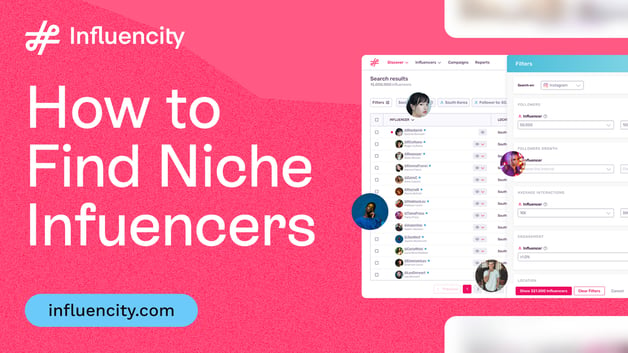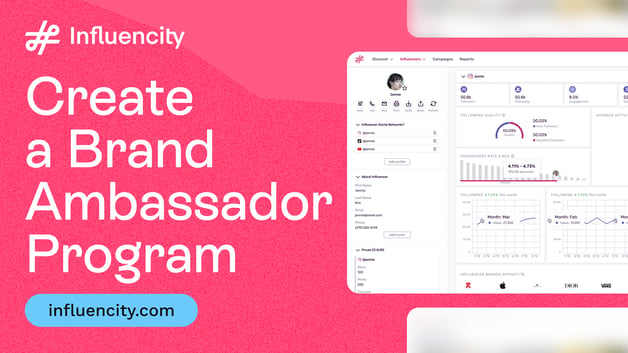So I put together an easy to follow guide on how to build brilliant casting calls that don’t just get creators to say “yes”, they get the right creators excited to work with you.
Here’s some of what you’ll find inside:
- How to write a casting brief that doesn’t get ignored
- What to ask for in every creator application (hint: rate cards matter)
- Tools that save you hours (and your sanity)
- How top brands like Nike align creators with audiences, not just vibes
- What to look for when vetting and the red flags to watch
- Why DEI isn’t just a checkbox, it’s a strategic advantage
- How to turn casting into a repeatable, scalable system
Step 1: Building the Brief That Attracts the Right Talent
Creators get dozens of casting calls, emails, and DMs a week, sometimes a day. If your brief doesn’t immediately communicate clarity, professionalism, and creative opportunity, it’s getting buried, skimmed, or skipped altogether.
A great casting brief is a first impression. It sets the tone for the partnership and signals to creators that this isn’t just another transactional gig. It’s an opportunity to collaborate on something meaningful, aligned, and creatively fulfilling.
Here’s how top agencies write casting briefs and proposals that stand out and attract the right creators.
Start With the ‘Why’
Before diving into logistics, lead with context. What’s the campaign about? What does the brand care about? Why is this product, launch, or story worth telling right now?
This section should be short, but compelling. Think of it as your elevator pitch to creators. You want them to feel something, excitement, curiosity, or purpose.
Key Elements Every Brief Should Include
- Campaign Goals: What’s the main objective? Brand awareness? Driving traffic? Building hype for a launch? Be specific. If you can, include benchmarks or KPIs, even if they’re soft.
- Audience Profiles: Who are we trying to reach? Describe them clearly, demographics and psychographics. For example, “Women 25–35 in urban areas” is a start, but “time-strapped professionals who value high-performance skincare and follow clean beauty trends” paints a fuller picture.
- Content Expectations: Be transparent about what kind of content you’re looking for in format, tone, and platforms. Are you expecting short-form video with voiceovers? Unboxings with first impressions? A mix of static and Stories? Set those expectations early.
- Deliverables & Timeline: This is where you get into specifics: number of posts, story frames, usage rights, and deadlines. If there’s a review process, outline it. The more detailed (and realistic) this section is, the smoother your campaign will run.
Pro Tips That Make Your Brief Next-Level
Tip 1: Include Visual Inspiration
A few strong references go a long way. Whether it’s a moodboard, Instagram saves, or a Pinterest link, showing is better than telling. It helps creators understand your creative vision without second-guessing.
Tip 2: Clarify Tone of Voice
Should the content be polished? Playful? Raw and vulnerable? Give adjectives, even comparisons to brands or creators they might know. You’re not dictating style, but offering guardrails.
Tip 3: Share Content Pillars
Let creators know what themes or values matter most in this campaign. For example:
- Empowerment through skincare
- Sustainability and low-waste beauty routines
- Breaking beauty taboos (like showing acne or texture)
Step 2: Streamlining Applications with Smart Tools
How to collect, sort, and screen influencer applications, without drowning in DMs or spreadsheets
Once your casting brief is live and circulating, it’s go time. You might get 10 responses. You might get 300. Either way, if you’re not using the right tools to manage the influx, you’ll end up buried in email threads, missing deadlines, or worse, overlooking the perfect creator.

This is where process meets precision.
Top agencies and brands know that influencer casting is about how efficiently you can evaluate, compare, and communicate with those creators. Here’s how to do it smarter, not harder.
Use Smart Platforms to Collect Submissions
Forget messy email chains and ad-hoc Instagram replies. The best agencies use structured forms and databases that make every application easy to review, track, and revisit later. A few tools we swear by:
- Influencity: Perfect for creating beautifully branded casting forms with logic-based fields (e.g. different questions for nano vs macro creators, campaign briefs, customisable specifications, etc.).
- Notion: Great for internal use if you're collaborating with a wider team or client. You can build a dynamic shortlist board with embedded creator portfolios.
- Creator Marketplaces: These platforms already have built-in talent pools. You can set filters by vertical, audience, and past campaign performance to get highly relevant leads fast.
Pro tip: No matter the platform, keep the form concise and mobile-friendly. If it takes longer than 5 minutes to complete, you’re losing great creators.
What to Ask For in Every Application
To properly evaluate creators, your intake form should collect these key materials:
- Media Kit: Their “influencer resume.” You want follower counts, past brand collabs, content types, and demographics. Bonus points if it's well-designed.
- Rate Card: Saves time down the line. Even ballpark pricing helps prequalify talent.
- Performance Screenshots: Ask for recent engagement stats (or invite them to share Creator Insights). Look for consistency, not just peak moments.
- Content Samples or Social Links: This may seem obvious, but always give them a chance to highlight what they’re proud of. Often, their most viral content isn’t what you’re actually hiring them for.
Automate Without Losing the Human Touch
Automation = efficiency. But connection builds relationships. You can have both.
- Auto-confirmation messages: A branded “Thanks for applying!” email reassures creators that their application was received and sets expectations for next steps.
- Tag and sort submissions: Use filters (like audience size, niche, or region) to quickly shortlist, but always review manually before final cuts.
- Use templated follow-ups, then personalize: Build reusable email templates for rejections, next steps, and shortlists. Then tweak with personal touches like “We loved your recent GRWM for [Brand].”
Creators remember how you treat them, even if they don’t get the job. A thoughtful, organized process can leave a lasting impression and make them want to work with your agency in the future.
Step 3: Vetting for Brand Fit and Performance
Why follower count is the last thing you should look at, and what top agencies check first
You’ve got a pool of influencers who applied to your casting call — now comes the most important part: figuring out who actually fits. Someone you know who's going to show up, deliver quality, resonate with your audience, and represent the brand with integrity.

Spoiler: follower count won’t tell you that.
The best agencies know that vetting creators is where the real value of a campaign lives or dies. Here’s how to do that.
1. Go Beyond Follower Count
Engagement Rate (But Look Deeper)
Start with basic math, likes + comments ÷ followers, but take it further:
- What’s the quality of the engagement? (Are people asking real questions, not just dropping emojis?)
- Are the comments relevant to the post?
- Does the creator respond to their audience?
An influencer with 10K followers and a 6% engagement rate will likely outperform a creator with 100K and a disengaged feed.
Tone and Voice
How do they talk to their audience? Is it playful? Empowering? Raw? Luxe?
More importantly, does that tone align with your client’s brand voice?
If your client’s brand is witty and irreverent, a super-serious or overly curated creator may clash, no matter how “on niche” they seem.
Authenticity
Does their content feel genuine? Do their sponsored posts blend in with their organic content? Audiences are incredibly good at spotting ads, and even better at sniffing out creators who are just going through the motions.
Look for creators who:
- Already use or love the product category
- Tell stories over simply showcasing features
- Put their personality into every brand message
Values and Brand Alignment
Creators are more than content machines. Their beliefs, values, and public presence matter.
- Do they support causes that align (or contradict) your client’s mission?
- Are they involved in social issues that your client has a stake in?
Look at their content, check their bio, highlights, pinned posts, and linked accounts (e.g., YouTube or Twitter).
2. Use an Influencer Scorecard to Stay Objective
To make your vetting process consistent, use a scorecard system to rate each candidate across key metrics:
Bonus: If you want to use a plug-and-play version, here’s a customizable influencer vetting scorecard template you can adapt for any campaign.
This helps avoid bias and gives your team a clear, data-backed way to discuss and compare talent.
Red Flags to Watch For
Even promising creators can hide serious issues under the surface. Watch out for:
- Sudden spikes in followers or engagement — could mean they bought bots or used engagement pods
- Comment spam — “Nice!” or unrelated emojis on every post = low-quality audience
- Past controversies or problematic content — Run a basic social audit (Google, Twitter, Reddit). What comes up?
- Inconsistent posting — If they ghost their platform for weeks, that can signal low reliability
When in doubt: trust your instincts, but back them up with data.
Step 4: Inclusion, Diversity & Representation as Strategic Assets

Treating Representation As a Business Advantage
Let’s cut to the truth: diversity in influencer marketing is must-have. Audiences are more socially aware, more vocal, and more discerning than ever. If your influencer lineup doesn’t reflect the reality of the people your client wants to reach, they will notice, and they won’t be shy about calling it out.
This is about building better campaigns that resonate more deeply and perform more effectively. Because when people see themselves reflected in content, they engage more and brands benefit.
Social Responsibility Is Expected
Representation has become a key factor in brand perception and consumer trust. Consider these stats:
- 71% of consumers say they expect brands to promote diversity and inclusion in their marketing.
- Content that features diverse talent sees 83% higher engagement on average (CreativeX, 2022).
- Gen Z and Millennials, two of the most marketing-savvy generations, are more likely to support brands that reflect inclusive values in their creator partnerships.
If your casting call doesn’t prioritize inclusion, it’s a strategic blind spot.
How to Integrate Equity and Representation Into Your Influencer Recruitment Process
Building inclusive rosters starts with intention, not obligation. Here’s how smart agencies do it:
1. Bake It Into the BriefStart with values. Include a clear line in your casting call that states your commitment to diversity and inclusion. Creators take note of this and it signals a more thoughtful and inclusive process.
2. Broaden Your Sourcing PoolsIf you’re only pulling from the same “known names,” you’re limiting the talent pool. Tap into:
- Creator collectives that represent BIPOC, LGBTQ+, and disabled creators
- Regional micro-communities or niche platforms
- Referrals from past collaborators who can vouch for fresh voices
3. Use Filters That Go Beyond Demographics
In your application form, invite creators to share not just who they are, but how they identify, what they advocate for, and what matters to their audience. This encourages more meaningful storytelling and collaboration.
Step 5: Shortlisting, Chemistry Checks & Creator Onboarding
How to turn a list of maybes into confident yeses, and set your campaign up for success from day one
By now, you've filtered through applications, vetted for brand fit, and built a diverse, high-potential roster. But casting isn’t done just yet. Before you lock in your creators, it’s time to run a few final filters; not just to assess talent, but to set up your partnerships for smooth collaboration, aligned content, and zero surprises down the road.

This is where the best agencies slow down to speed up. They know that investing time in chemistry checks, clear negotiation, and thoughtful onboarding leads to faster approvals, fewer revisions, and stronger creative output.
1. Chemistry Checks
Shortlisting takes into account performance and partnership potential. You’re about to hand over brand messaging, creative interpretation, and campaign momentum to these people. It pays to ensure you’re aligned.
Consider:
- Quick intro calls (15–20 mins): A casual, no-pressure way to check for vibe, professionalism, and enthusiasm.
- Test content: Ask for a short-form draft or content sample (even just a mock caption or 15-sec video) to see how they interpret the brief.
- Review their comms style: Are they clear and timely over email? Do they ask thoughtful questions? These are subtle indicators of how they’ll handle deadlines and feedback.
Pro tip: You’re looking for creators who can be easy to work with. When campaigns scale or timelines shift, this becomes priceless.
2. Negotiation Tips: Be Transparent, Be Fair
Negotiation doesn’t need to be awkward, especially when it’s handled with transparency and respect. Top agencies build trust from the first offer.
Best practices:
- Start with a clear scope: Be upfront about deliverables, deadlines, usage rights, and any review process. Creators are more likely to meet expectations when those expectations are unambiguous.
- Respect their rates, but be honest about budget: If you have limitations, say so. Many creators are open to bundles, long-term rates, or value trades (e.g. gifting + exposure) if the relationship feels promising.
- Put it in writing: Use simple, friendly contracts that cover ownership, exclusivity (if applicable), and payment terms. Use tools like HelloSign or DocuSign to streamline this.
3. Onboarding Creators That Works
Once they’re locked in, don’t throw them into the deep end. A strong onboarding process makes everything smoother for you, for the client, and especially for the creator.
Here’s what top agencies include in their onboarding checklist:
Optional (but recommended): Record a short Loom video walking them through the brief — it feels personal, reduces confusion, and makes you look buttoned-up.
Step 6: Turning Influencer Recruitment Into a Scalable System

Turn One Successful Casting Call into an Engine for Future Campaigns
Starting from scratch every time you run a new influencer campaign is exhausting, inefficient, and, frankly, unnecessary. The best agencies build casting systems. Systems that can scale. Systems that evolve. Systems that turn every campaign into an opportunity to refine, recycle, and repurpose for the next big brief.
From One-Off to Always-On: Why You Need a Scalable Casting System
When you approach influencer casting with a long-term lens, you stop treating it as a temporary task and start treating it as an investment in your agency’s IP.
The goal isn’t just to find creators for this campaign. It’s to build a vetted, diverse, and performance-proven network that’s ready for the next client, the next product drop, or the next seasonal push — without reinventing the wheel.
1. Create and Maintain a Living Creator Database
Think of this as your agency’s talent bench — a centralized system where your top creators live, ready to be tapped into at a moment’s notice.

Whether you use a particular tool or a custom CRM, make sure you track:
- Name, handle, niche, and platform presence
- Audience size and engagement rate
- Past brand collaborations
- Notes on tone, professionalism, and reliability
- Visual style (with links to top-performing content)
Tag creators by verticals, values, campaign types (e.g. product launches vs. evergreen UGC), or even vibe (e.g. minimalist, Gen Z chaotic, wellness expert). This allows your team to pull quick shortlists without starting from zero.
Pro tip: Treat this database like a living document — update it after every campaign with notes on performance, ease of collaboration, and results.
2. Build for Long-Term Campaign Models
One great creator partnership can turn into so much more than a one-off post. Top agencies plan ahead for multi-phase engagement opportunities like:
- Ambassadorships: Long-term relationships that evolve over time (ideal for brands looking to build advocacy and trust).
- Whitelisting / Paid Amplification: Creators who consistently convert are ideal candidates for whitelisting. Building a system around paid licensing rights early on helps streamline this later.
- UGC Banks: Don’t let good content die on the feed. Build content libraries from your top creators to be reused across paid ads, email, web, and organic social. Just make sure licensing is clear from the start.
These models increase campaign lifespan and boost ROI, streamline production, and deepen brand–creator relationships.
3. Make It Repeatable
To truly scale casting, you need processes that can be reused, refined, and handed off. That means documenting:
- Casting brief templates
- Influencer application forms
- Vetting criteria and scorecards
- Onboarding checklists
- Post-campaign feedback forms
When everything lives in one place — and everyone on your team knows how to use it — you unlock speed without sacrificing quality.
Your Next Move: Treat Casting Like Strategy
Casting shouldn’t be the last thing you scramble to finalize — it should be baked into your creative process from the beginning. The best agencies treat influencer selection as thoughtfully as they do audience targeting or brand messaging.
So if your casting process still lives in scattered spreadsheets or vague email chains, now’s the time to refine it. Build systems. Use scorecards. Make diversity a non-negotiable. Develop creator relationships that last beyond a single campaign.
Casting is a creative strategy — and one of the most powerful tools your agency has to deliver standout results.
Tags:
Influencer Recruitment




![TEMPLATE Influencer Marketing Campaign Proposal Template [+Playbook] Create professional, winning pitches to secure your next big campaign.](https://no-cache.hubspot.com/cta/default/3449185/interactive-186850340410.png)




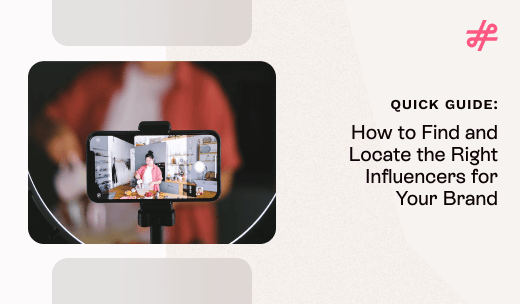





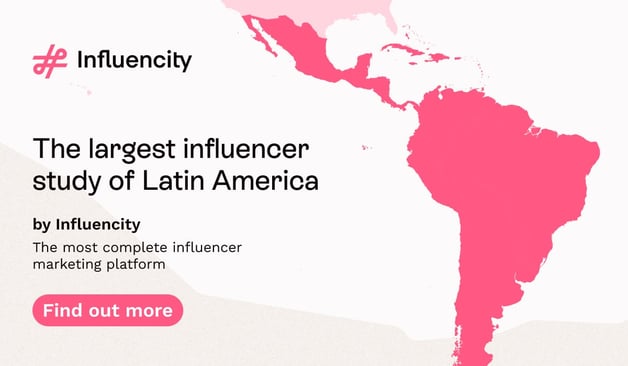


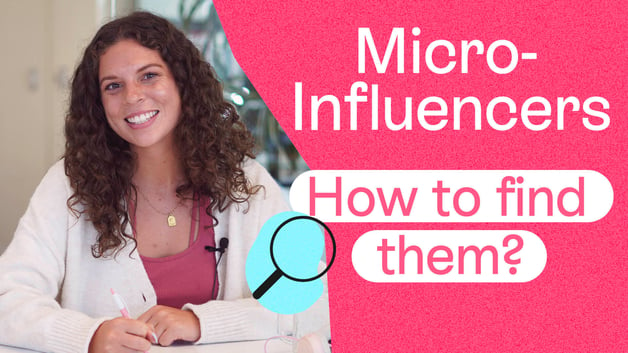


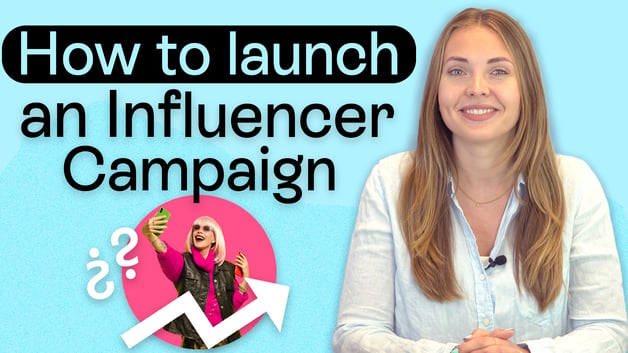



%20and%20How%20Can%20They%20Benefit%20Your%20Brand%20article.jpg?length=628&name=What%20Are%20Key%20Opinion%20Leaders%20(KOL)%20and%20How%20Can%20They%20Benefit%20Your%20Brand%20article.jpg)
